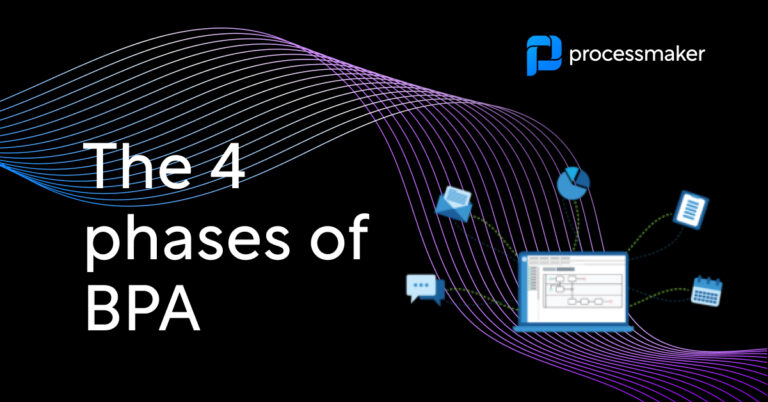Business process automation (BPA) has infiltrated nearly every industry as innovative technologies combined with unprecedented operational challenges continue to reshape the workplace. The intelligent Process Automation Market is expected to grow to USD 51.35 billion by 2032 – a reflection of the increasing demand for efficient, streamlined, and agile business processes. From small businesses to global enterprises, the benefits of BPA are clear: increased efficiency, reduced costs, improved accuracy, and enhanced decision-making capabilities.
What exactly is business process automation?
Simply put, it is the use of technology to automate recurring tasks and workflows within a business. This can range from simple tasks such as data entry to complex processes like supply chain management and even to entire job functions. By automating these tasks, businesses can not only free up valuable time and resources but also reduce human error and improve overall productivity.
Impact of business process automation?
According to a 2022 McKinsey survey, “For many, automated systems will account for 25 percent of capital spending over the next five years, results from the 2022 McKinsey Global Industrial Robotics Survey show. Industrial-company executives expect to see benefits in output quality, efficiency, and uptime.”
To be sure, the age of automation is already well underway in most organizations. According to a recent McKinsey Global Survey of business leaders spanning a broad range of industries, approximately 23% of automation spending is expected to come from retail and consumer goods. Food and beverage industries, alongside retail, are expected to account for 15%, while automotive would average 8%.
The McKinsey article continues, “Some aspects of productive activity are more amenable to automation than others are with routine tasks at the head of the line. Activities such as picking, packing, sorting, movement from point to point, and quality assurance are already automated to some extent, and these will continue to see heavy investment over the coming years.”
There’s a decrease in process bottlenecks and an increase in productivity as more companies leverage BPA. People are able to focus on human-centered operations. According to the McKinsey survey, “Activities such as assembly, stamping, surface treatment, and welding, all of which require high levels of human input, are less likely to be automated in the short to medium terms.”
The 4 phases of business process automation
A comprehensive and effective systematic approach to business process automation consists of 4 phases: analysis, implementation, integration, and maintenance and support.

1. Analysis
To use business process automation technology, understand your organization’s infrastructure and capabilities with the help of business process analysis.
Using automation technology without understanding its impact can lead to lower productivity and efficiency in a process or other business processes. And it doesn’t get you any further with your repetitive tasks.
After analyzing the process and current systems, stakeholders can select automation technologies that suit their needs and goals. Organizations new to automating business processes should start with one BPA technology at a time.

2. Implementation
In the implementation phase, stakeholders customize the chosen business process automation technology. They create a detailed list of functions, train users, and give them access to the system.
The business process automation technologies undergo extensive testing to ensure systems are performing as intended and are sufficient to satisfy the organization’s goals.
And since you’ve already analyzed your needs, you’ll be better prepared to pick the right automation tools for your organization. Depending on which software you use, your organization can reap the benefits of artificial intelligence (AI), robotic process automation (RPA), and intelligent document processing (IDP).
Alternatively, you can pick the full-suite automation solutions that have the capabilities of all aforementioned technologies.

3. Integration
In the integration phase of business process automation, stakeholders integrate the new automation technologies with enterprise systems and third-party solutions. Moreover, data from disparate sources are typically combined and integrated during this step. Integration is largely accomplished through APIs. An intelligent business process management suite (iBPMS) can prove instrumental by simplifying and expediting the integration process.
BPA integration will also increase efficiency, improve data accuracy, enhance collaboration, reduce costs, and offer scalability to handle larger volumes of work without significant additional effort and resources.
4. Maintenance and support
Business process automation is an ongoing and long-term initiative. Organizations must continue to analyze their business processes to identify inefficiencies and bottlenecks. An iBPMS allows organizations to integrate advanced process monitoring technologies such as process intelligence and process mining. These technologies monitor complex business processes in real time to enable decision-making and prompt corrective action.
Organizations should also continuously update their business process automation solutions and ensure that the entire organization has access to technical support. Widespread user adoption fosters an automation-minded culture and greatly increases the chances of success.
BPA and hyperproductivity
Business process automation and intelligent automation have revolutionized the way organizations operate, propelling them into an era of hyperproductivity. This transformative approach leverages technology to streamline, optimize, and accelerate routine tasks, freeing up valuable human resources for more strategic and creative endeavors.
By automating repetitive processes such as data entry, document routing, and inventory management, businesses can minimize errors, enhance efficiency, and reduce operational costs. Moreover, automation fosters real-time data insights and analytics, empowering decision-makers to make informed choices swiftly.
Teams can be more productive by focusing on innovation, problem-solving, and customer-centric activities. This helps businesses grow and stay competitive in a fast-paced environment.






